2020 has been a year for resilience, strength and growth. Testing our individual capacity to roll with the punches and get back up after we’ve all been shaken around a bit. With COVID-19 turning our lives upside down, all of us have been adapting to a ‘new normal’, one that may be uncertain in some areas, but exciting in others. And we are all now speculating what the future may bring.
So, we've sat down with a few industry experts to talk about their experience over the past transformational year, as well as looking ahead to 2021 and beyond.

Adrian Allen
Regional Manager
Stockland

Peter Saba
Director | Property Development
Walker Corporation

Matthew Beasley
Project Director
Dexus

Matt Collins
State Manager
Planning Institute of Australia

Beth Toon
CEO | Executive Director
Place Design Group

Ian Andrews
Executive Open Space Manager
Campbelltown City Council
Q1
In many ways, COVID-19 has only accelerated what we already knew was coming - the future of retail, digital disruption, shop local, etc. From what you are seeing, what are the most significant transformational areas in the property industry and how will this likely impact the sector in the next 3-5 years?
"There are some clear trends that are likely to shape our communities in the short and medium term. Most significantly, we’re seeing a new localism, with people
re-discovering local centres,
re-engaging with local parks and open space, and re-valuing local amenity. This is driving the “15 minute city” concept, and will also mean communities are likely to demand higher quality public open space and more connectivity between open spaces."
Matt Collins says
"In the short term, particularly in New South Wales, there will be a
slowdown in the sale of new houses and units in the greenfield area as a result in
the slowdown in immigration. However, planning is progressing, and the new communities
have addressed the importance of open space in the delivery of these new
communities. COVID-19 has increased the community’s awareness of the outdoors
and they are looking for the provision of good quality open space close to
home. The pandemic has shown us that open space provides both physical and
mental health benefits."
Ian Andrews says
"We are seeing a shift to Queensland. With some people transitioning to ‘work from home’, we are already seeing the interstate migration trickle effect. And why wouldn’t you, with the affordability that Queensland offers in comparison to housing prices in Sydney and Melbourne.
The challenge that will come with this, is getting the infrastructure in place to support the migration. With demand moving towards Brisbane, Gold Coast and the Sunshine Coast, we need to ensure that we have the ‘city’ infrastructure in place for the way that is coming….but this is in the making which is positive."
Peter Saba says
Q2
Given COVID-19 has kept many people close to home this year, we are seeing communities being more vocal about their local areas and change that is occurring. How important is it to be consulting with communities at a time like this on critical projects?
"We are seeing more people out and about in their local communities, using walking paths, parks and local cafes – it is creating a real vibrancy in the neighbourhoods. There is a shift in how public spaces are being used – with people at home at different times of the day, they are accessing amenities at times they hadn’t before and for different purposes. Engagement has slightly increased and we are seeing community having stronger views, particularly online, about what and how they want their local neighbourhoods to be, what infrastructure they want, when they want to access it, and what role they want to play in the decision making around this."
Adrian Allen says
"We have always been strong advocates for engaging with community early in a project lifecycle and bringing them on the journey. This year has seen a big push for projects to move forward to safeguard economic stability and as a result community consultation has had to adapt. This has actually enabled so much more engagement, as people have had more time to connect, and use of video conferencing has become far more normalise, resulting in us seeing all ages and walks of life tap into this form of consultation. It has also enabled more people to have a voice through digital platforms, rather than a small minority face-to-face, which is leading to better project and community outcomes. This type of engagement is not going away even when we can come back to face-to-face…it is only going to strengthen the community consultation offering."
Beth Toon says
"The hallmark of a good development has always been strong engagement with all stakeholders across all stages of the development. A positive outcome of this year is that we may see greater engagement from the community on projects as a result of the increased connectivity they have to their local spaces."
Matthew Beasley says
Q3
Public Open space has been consistently identified (during the pandemic) as one of the most important assets for people to enjoy, relax and to get out of the house. What do you believe are the key benefits of open space and the rigour which has been placed on these environments in the last 6 months?
"One of the biggest factors is all about large public open space and placemaking. If you make really great places for people to live, work and play, they will want to come and experience it themselves.
It is important we consider connectivity – being able to walk and ride in safe environments will be even more important in the future. And parks and open space are also no longer for just young families. With more people experiencing outdoor spaces during COVID, there is now even greater need for our public spaces to cater for all ages and accessibility. This layer of activation is across all of our projects now – looking at different amenities and different activities to cater for demographics, uses, and interests."
Peter Saba says
"As a landscape architect working in local government, public open space has always been a key focus for communities. Any survey with the community always rates open space as being an important determinate of the community’s health and well-being. COVID-19 has highlighted the importance of open space to the community. Although some facilities closed down during the lockdown period, exercise became one of the key reasons for being outside. This focused the community’s attention to any gaps within our open space facilities and led to an increased focus on the maintenance of these spaces. Luckily for the community in Campbelltown, the Council has had its best period of open space delivery in a number of years."
Ian Andrews says
"There's no doubt that people are valuing and embracing public open space like never before, with urban green spaces in particularly high demand during COVID lockdowns.
Parks and green space provide many environmental, social, physical and mental health benefits, so it’s no surprise people have flocked to their local park or open space when they’ve been able to. It would be great if a positive legacy from this terrible virus is new investments that deliver more high-quality open space, in walking distance from every home."
Matt Collins says
Q4
As we look to 2021 and transition to long term planning on significant infrastructure projects, what do you think the focus areas need to be for government?
"Governments will need to continue investing in 2021 to support the economic recovery, and it’s essential that we prioritise projects that are “shovel worthy”, not just “shovel ready”. As the transition to long-term planning for significant infrastructure projects occurs, we should develop new models of place-based planning that ensure we unlock all the potential social and economic value from major projects. We can’t just build a major project in isolation anymore – we should be joining-up activity and projects better so we realise truly transformational impacts."
Matt Collins says
"As we look to plan and implement critical infrastructure, it is essential all levels of government are aligned and connected with the development industry. Major infrastructure crosses so many boundaries and without alignment of priorities, purpose, and objectives, we won’t achieve the necessary and urgent outcomes our communities need. Industry bodies can play a key role in facilitating communication not only across the industry but across the various layers of government.
2020 has been a year which has forced us all to look at things differently. We need to build on this and work collaboratively to not only support economic recovery but drive better outcomes for the future of our cities and regions."
Beth Toon says
"Local governments have experienced a decline in revenue as a result of COVID-19 this year with facility closures, reductions in parking income, rate freezes, and the like, and this will only continue. The impact of this will be ongoing reviews in budgets and where the priorities in infrastructure spending will be. In response to the decline in revenue at a local level, the Federal and State Governments initiated a number of grant and investment programs that have focused on the delivery of open space and infrastructure projects. This will support the ongoing pipeline of infrastructure projects being delivered over 2021. Continued investment at a Federal and State level will be important to ensure a partnered approach with local government to support our communities recovery post COVID."
Ian Andrews says
Q5
THIS HAS BEEN A YEAR THAT HAS SEEN MANY IN OUR SECTOR RISE TO THE CHALLENGES BROUGHT ON BY COVID-19 AND OTHERS STRUGGLE. WHAT DO YOU THINK THE AREAS OF OPPORTUNITY WILL BE IN 2021 VS THE AREAS OF CHALLENGE?
co-invest alongside this infrastructure in a way that improves our community’s quality of life is the biggest challenge. We need to ensure we don’t rely on too few or too much, but rather look at how we can encourage a strong
co-investment strategy. The biggest challenge will be how we engage with our communities to support this investment and create jobs."
Adrian Allen says
Matthew Beasley says
2021 is going to see some pain, particularly as we see subsidies and grants like job seeker and the Home Builder grant end. But we will also see real opportunities for areas traditionally where little growth has occurred. With our shift in working culture, we will see some people choosing to live out of our city centres. This is going to bring a focus back to our suburbs and regional areas. The world of virtual working environments will be one to watch and the impact this brings on decentralisation and inter-state migration."
